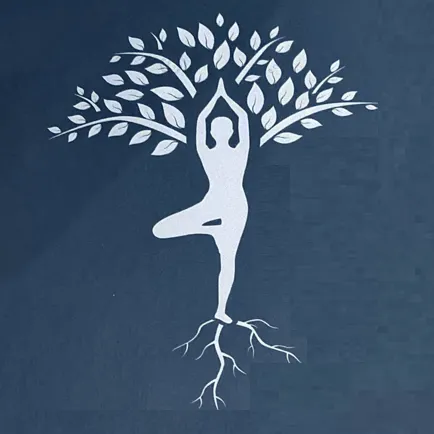Blogs
Written by Elke Hottentot

Essential messages of the Bhagavad-gītā
What are the Essential messages of the Bhagavad-gītā?
To answer the above question, I will first explain what the Bhagavad-gītā is; then describe the three postulations that form the foundation of this work, as well as its most important protagonists.
What is the Bhagavad-gītā?
The Bhagavad-gītā comprises 700 verses that are set in the middle of the Mahadbarata, the longest texts ever written of all world literature. Whereas the Mahadbarata describes a ferocious battle on a battlefield, the Gītā’s subject is the war within and the inherent struggle for self-mastery. A struggle that we are to wage in order not to be defeated by life’s deceptions and challenges; but instead to emerge victoriously and life live with joy and gratitude.[1]
The Bhagavad-gītā explains human nature and its relation to God, the various levels of consciousness, the construct of reality and ways in which one can attain self – mastery.[2] Of all Sanskrit texts, the Bhagavad-gītā has had the greatest influence on modern Hinduism. Of all Hindu texts, it is the one the most known in the West. It comprises all Vedic knowledge and is foundational for the darsana Yoga.
Although it is not known for certain, the 18 chapters that comprise the Bhagavad-gītā seem to have been added to the 6th edition of the Mahabharata between 200 before and 300 after J.C. According to Easwaran[3], the Bhagavad-gītā is, in a literal sense, considered shruti. This is remarkable, as the Mahābhārata [e1] of which the Gītā is part, is considered smriti by tradition.
Literally, Bhagavad-gītā stands for ‘the song (gītā) of the blessed lord (Bhagavad) – with lord referring to Krishna. It is an episode that spans from chapter 25 to 42 at the end of the Mahabharata, the longest text ever written, during which Krishna - as avatar of Vishnu - reveals himself to Arjuna, warrior on a battlefield and who is about to fight an immense war.
It is a timeless text that plays around and beyond the edges of rationality; it tampers with religious dogma of any time by calling into question longstanding assumptions that entered the domain of so-called truths that no longer need to be verified, or submitted to the test of lived experience in order to establish their truthfulness. It challenges the status quo by creating new perspectives and inviting the reader to put on a proverbial ‘Bhagavad-gītā lens’ and re-examine long standing habits and the traditions that flow from these. And even though it was written more than 2000 years ago, its messages are as valid today as they were then.
A quick comparison between the Bible and the Bhagavad-gītā shows us that the former is based on duality, whereas the latter on non-qualified duality, meaning: on the surface, in the physical, mental and emotional world, there seems to be duality, but at a deeper, spiritual level, we know such does not exist. At this deeper level, there is unity, oneness, and wholeness. The Bible considers God to exist independent and outside of human beings; whereas the Bhagavad-gītā contemplates the Divine as ever present and within us. And whilst the body is denied in the Bible and depicted as something to be ashamed off, the Bhagavad-gītā invites its contemplator to use the body. Experimentation is key in the teachings of the Bhagavad-gītā, whereas ‘doing as one is told’ is the main tenet of the Bible.[4]
The latter risks becoming a doctrine, while the Bhagavad-gītā remains to be understood and interpreted at the level of lived experience. The Gītā emphasizes experimentation of union with reality ‘as it is’. Hence, the notion of travelling through one’s own experience, to experiment, is strong in the Bhagavad-gītā. Just the same as Arjuna, who is the central character in this sacred text as we will see in the following section, the reader is invited to take the journey of his own life as the path of, and to, transformation.
And as Easwaran points out, any reader that is a seeker after God will be guided by the Gītā, as it is a “handbook for Self-realization and a guide to action” [5] that makes most sense when the teachings offered are practiced. Each person takes what he needs given his own individual circumstances. The Bhagavad-gītā is also considered a myth, in the sense that it carries a message in the disguise of universal symbolism that has the potential to transform its reader; to accelerate one’s own personal evolution.[6] But, more than anything else, it is a guide on “how to live effectively in a world of challenge and change”[7] and sheds light on the journey toward illumination.
Three core postulations of the Bhagavad-gītā
The Bhagavad-gītā calls on the unchangeable foundation that is inherently present in each and every human being, a foundation that is always and already there, independent of the degree in which one evolves physically or intellectually.[8] Three important postulations - claims to truths - are threaded throughout its text, namely:
- Metaphysical knowledge
There is a reason for everything. Realizing this requires practice of the intellect, our rational faculties. To clarify this, the Bhagavad-gītā contains metaphysical knowledge that makes sense of the human being as part of the cosmos by presenting it as a parallelism. The human being is presented as a little cosmos that is very much alike the big cosmos, one that moves from a stage of unity to one of differentiation and specification.[9]
- Ethical discipline
The world of our five senses, ungoverned, perpetually disperses us. Sustained ethical discipline is necessary in order to perceive unity. “No lasting progress is possible on the spiritual path without self discipline.”[10] Sadhana - disciplines undergone for the sake of spiritual growth[11] - is required if we are to perceive the unity that lies beyond the world of sense perceptions. Sadhana is the means by which we can live our live more and more in line with our dharma, meaning one that is in complete harmony with oneself and experiences ‘a sense of unity’.[12] Each one of the 18 chapters of the Bhagavad-gītā offers one form of yoga, or path by which to return to a state of unity.
- Spiritual realization
Once one can see reality clearly for who one is beyond illusions (maya[13]) created by ego, one can perceive that atman = Brahman separated[14]. Brahman is the fire that controls the world, while atman is a spark of this same fire.
As is clear from these three postulation, life, full with its diverse experiences at the level of the mind, body and spirit, is the playground within which to apply the teachings of the Bhagavad-gītā.
Most important protagonists of the Bhagavad-gītā
The Bhagavad-gītā can be read as a story of two opposing families who also have their own armies, the Kauravas and the Pandavas. The former counts 100 warriors while the latter counts five, all of whom are brothers, including Arjuna. All are married to the same woman; Draupadi. The Kauravas incarnate adharma – injustice - those who are not virtuous. And, the Pandavas incarnate dharma – justice - those who are virtuous. Lord Krishna is friends of both families. To support their war, he leaves it to the Kauravas to choose either his army, or his guidance. They choose his army, leaving the Pandavas to be offered Krishna’s guidance during the battle.
Arjuna as the lead warrior is driven in his chariot by Krishna. It is here that the rich symbolism of the Bhagavad-gītā begins to reveal itself to the reader, with Krishna – the mysterious incarnation of Lord Vishnu - representing “not some external being, human or superhuman, but the spark of divinity that lies at the core of the human personality”[15] Arjuna the embodied individual soul or the Everyman; the chariot the body; the five horses that are pulling the chariot the five sense and the reins the operations of the mind.[16]
The title ‘The song of the blessed Lord’, refers to the dialogue between Arjuna and Krishna that is about to ensue at the very beginning of the battle. Arjuna does not want to fight when he realizes he is about to kill old friends and will lose family. He is in conflict with his consciousness, his ego; he fears psychological suffering secondary to undertaking acts that he is fundamentally not in agreement with. But, as Krishna reveals to him, he realizes that he does not have the right to refuse the battle as fighting is his dharma; that he is a warrior after all; that he has to act without expecting certain results. In the end, Arjuna fights freely, letting the Divine act through him. The notion of dharma is very important in the Gītā and refers to “that which supports, from the roots dhri, to support, to hold up, or bear.”[17]
Essential messages of the Bhagavad-gītā
The essence of the Gītā can be found when interpreting it symbolically. The parallel between the story that is contained in the Gītā and us today is clear; in our lives we engage in countless battles. Whereas the battlefield is Arjuna’s proverbial playground in which to experiment, our day-to-day life is this same battlefield. As such, the war outside is a metaphor for the war within – our inner landscape of mental projections that are largely made up of an incessant flow of judgements, confusions and worries that pass the daily revue in our mind. Similar to Arjuna, we are plagued by a thousand and one questions, constant doubt paralyzes us and leaves us without making clear decisions, full-well knowing that decisions are needed to change the direction of our path. Yet, so often attachment to one or the other illusive truth and the lack of absolute certainty of that what lays beyond, blocks us on our path. It is clear that we are very much like Arjuna. In fact, reading the Gītā as if one was Arjuna and as if the dialogue with Krishna was not one with an external source, but one between our ordinary self and our deepest Self, will strengthen its impact on the reader.
Being faced with an impending war and the realization that a momentous choice is upon him as to its outcome, Arjuna is at a complete loss and full of questions. In chapter two of the Bhagavad-gītā, he turns to Krishna and starts to ask profound questions such as: “What is the purpose of his life?”[18]; “…How can a person who knows that the soul is indestructible, eternal, unborn and immutable kill anyone or cause anyone to kill?”[19]; and “What are the symptoms of one whose consciousness is thus merged in transcendence? How does he speak, and what is his language? How does he sit, and how does he walk?”[20] Arjuna’s journey that led him to the asking of these questions is conveyed in the first 100 verses of the Bhagavad-gītā.
The remaining 600 verses of the Gītā contain Krishna’s response to Arjuna’s questions. Arjuna learns that there is more to this being human and to reality than meets the eye – more than our five senses with their limited capacity can perceive off - and a whole new world opens up to him. He comes to see that our mind looks at unity and timelessness but perceives multiplicity and transience. He discovers the notion of maya, the primal creative energy that makes unity appear as diversity with countless names and forms that only exist as a condition of perception. He learns about four levels of consciousness and how unity only appears when one is established in the fourth level, turiya. He is instructed about dharma, which literally means “that which supports”, as the essential order of things which, if disturbed, sends ripples everywhere. Living according to one’s dharma implies that one engages in right, just, good actions and thoughts. It is this that maintains this order. The notion of dharma is rooted in the foundational principle of oneness; the fundamental law of unity, which allows for balance in the whole of creation. Here, Arjuna is initiated in the law of karma, which implies that every action and thought necessarily has consequences due to the inherent unity of all of creation.[21]
Arjuna comes to understand the notion of samsara or rebirth. Krishna teaches Arjuna about the importance of detaching from pleasure and pain as the only way to bypass life’s apparent duality and be able to identify with atman, the immortal Self. To realize the Self, the Bhagavad-gītā teaches “… three yogas, or even four – the four paths of Hindu mysticism”[22]: jnana yoga – the yoga of knowledge, bhakti yoga – the yoga of devotion, karma yoga – the yoga of selfless action, and raja yoga – the yoga of meditation. In presenting these four kinds of yoga, Krishna sees yoga as transcendental knowledge, love, selfless action, and meditation and as such offers a practice to each and every spiritual aspirant.
Regardless of the diversity of margas – paths – to Self realization that are offered in the Gītā, the common thread amongst all is renunciation of selfishness in thought, word and action – in essence, without any attachments to the fruits of our labours, as is so beautifully captured in chapter II, sloka 47 (a Sanskrit verse usually consisting of two pithily composed lines[23]). Only be doing so, will we gravitate towards what the Bhagavad-gītā refers to as svadharma, which encompasses the path of each person, unique and different, of living which ultimately will bring one closer to one’s true Self.[24]
No matter what marga we follow, the Bhagavad-gītā thus invites us to become the master of our own faculties to that they can serve us to act in a way that brings us closer to the divine that is in all of us. The sense that accompanies this process of mastering is one of no longer existing as oneself, i.e., identifying with oneself, but as the Divine whom is left to act through oneself. No longer considering ourselves to be the actor, but the Divine instead, there no longer is a need to cling to the results of our actions, as for once and for all, the notion of ‘my’ and ‘mine’ will have been effaced.
[1] Easwaran, E. (2010). Nilgiri Press, Tomales, The Bhagavad Gita.
[2] Easwaran, E. (2010). Nilgiri Press, Tomales, The Bhagavad Gita.
[3] Idem, p.18.
[4] Duc, G, Geneva, Feb 5th 2009, during a teaching on the the Bhagavad-gītā.
[5] Easwaran, E. (2010). Nilgiri Press, Tomales, The Bhagavad Gita,, p. 48.
[6] Duc, G, Geneva, Feb 5th 2009, during a teaching on the the Bhagavad-gītā.
[7] Easwaran, E. (2010). Nilgiri Press, Tomales, The Bhagavad Gita,, p. 10.
[8] Free translation of Gerard Duc, February 5th 2011, during a teaching on the Bhagavad-gītā at Yoga 7.
[9] Daouk, M., Lausanne, September 30th 2011 during a teaching on the Bhagavad-gītā.
[10] Easwaran, E. (2010). Nilgiri Press, Tomales, The Bhagavad Gita, p. 244.
[11] Idem, p. 244.
[12] Idem, p. 267.
[13] “Maya was the magical capacity to create form and illusions …both delightful and dangerous … it is the passing show that conceals immortal being …. it is also that what disguises the true nature of things”, such as Krishna’s when Arjuna is first joined by him (Easwaran, E. (2010). Nilgiri Press, Tomales, The Bhagavad Gita, p. 150).
[14] Daouk, M., Lausanne, September 30th 2011 during a teaching on the Bhagavad-gītā.
[15] Easwaran, E. (2010). Nilgiri Press, Tomales, The Bhagavad Gita, p. 21.
[16] Easwaran, E. (2010). Nilgiri Press, Tomales, The Bhagavad Gita.
[17] Idem, p. 31.
[18] A.C. Bhaktivedanta Swami Prabhupadā (1986): The Bhaktivedanta Book Trust, Kings Cross, Bhagavad- Gitā: As it is, Chapter II - 7, p. 81.
[19] Idem, Chapter II – 21, p. 103.
[20] Idem, Chapter II – 54, p. 142.
[21] Easwaran, E. (2010). Nilgiri Press, Tomales, The Bhagavad Gita.
[22] Idem, p. 49.
[23] Mikel Burley (2000): New Delhi, Shri Jainendra Press, Hatha Yoga: Its context, theory and practice, p. 7.
[24] Easwaran, E. (2010). Nilgiri Press, Tomales, The Bhagavad Gita






